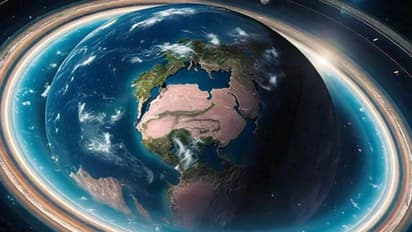Earth once possessed Saturn-like rings, scientific study reveals
Published : Sep 17, 2024, 01:58 PM IST
A recent scientific study has revealed that Earth once possessed rings similar to Saturn's approximately 460 million years ago. Learn about this fascinating discovery and its implications for understanding Earth's history.
Explore the latest Lifestyle News covering fashion, wellness, travel, Food and Recipes, and more. Stay updated with trending Health News, fitness tips, and expert insights to inspire your daily living. Discover personalized lifestyle trends that keep you stylish and informed. Download the Asianet News Official App from the Android Play Store and iPhone App Store for everything that adds value to your everyday life.
